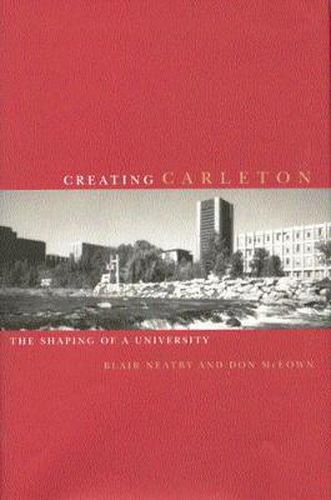Readings Newsletter
Become a Readings Member to make your shopping experience even easier.
Sign in or sign up for free!
You’re not far away from qualifying for FREE standard shipping within Australia
You’ve qualified for FREE standard shipping within Australia
The cart is loading…






Carleton College began in 1942 by offering evening courses for academic credit. It became a full-time college with the return of veterans from Europe. For the next decade it survived as a private non-sectarian institution, with the administration trying to balance the budget, the professors trying to ensure respectable academic standards, and the students trying to imitate college experience as they imagined it. In the 1960s there was a transformation as the baby boomers reached university age and the Ontario government loosened its purse strings to ensure that there would be places in the universities for them. By the end of the 1960s Carleton was a mid-sized university on a new campus. In Creating Carleton Blair Neatby and Don McEown describe the role of the administration, the faculty, and the students in shaping the university. They analyse how Carleton University tried to adjust to the changing social values of the 1960s, describing how the administration tried to come to terms with financial constraint, the professors tried to shift their emphasis from teaching to research while fretting about job security, and the students challenged the traditional authority of university officials and professors in an effort to become fee-paying clients rather than pupils. Over and above these changes were attempts to come to grips with individual rights and the changing status of women. Creating Carleton is not only the story of how Carleton came to terms with these changes but a case study of the transformation of higher education in Ontario and in North America.
$9.00 standard shipping within Australia
FREE standard shipping within Australia for orders over $100.00
Express & International shipping calculated at checkout
Stock availability can be subject to change without notice. We recommend calling the shop or contacting our online team to check availability of low stock items. Please see our Shopping Online page for more details.
Carleton College began in 1942 by offering evening courses for academic credit. It became a full-time college with the return of veterans from Europe. For the next decade it survived as a private non-sectarian institution, with the administration trying to balance the budget, the professors trying to ensure respectable academic standards, and the students trying to imitate college experience as they imagined it. In the 1960s there was a transformation as the baby boomers reached university age and the Ontario government loosened its purse strings to ensure that there would be places in the universities for them. By the end of the 1960s Carleton was a mid-sized university on a new campus. In Creating Carleton Blair Neatby and Don McEown describe the role of the administration, the faculty, and the students in shaping the university. They analyse how Carleton University tried to adjust to the changing social values of the 1960s, describing how the administration tried to come to terms with financial constraint, the professors tried to shift their emphasis from teaching to research while fretting about job security, and the students challenged the traditional authority of university officials and professors in an effort to become fee-paying clients rather than pupils. Over and above these changes were attempts to come to grips with individual rights and the changing status of women. Creating Carleton is not only the story of how Carleton came to terms with these changes but a case study of the transformation of higher education in Ontario and in North America.